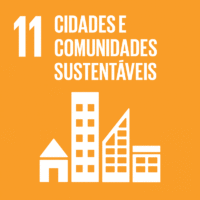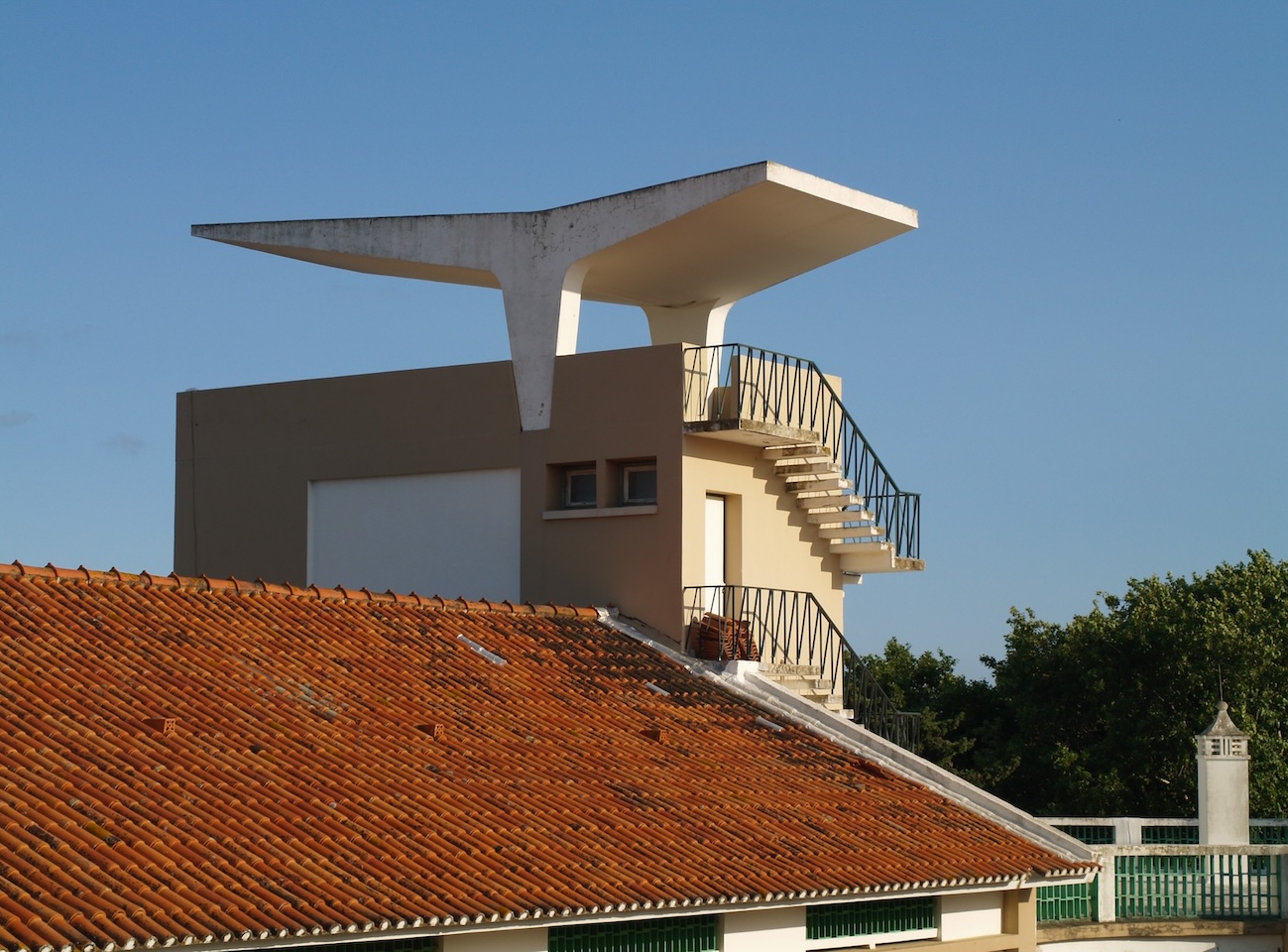Arquitetura de Necessidade: Equipamento Comunitário em Portugal 1945-1985 examina os processos de encomenda, projeto e produção de equipamento essencial cívico e rural dascomunidades locais em Portugal entre o final da Segunda Guerra e a adesão à Comunidade Europeia. Estes edifícios, muitos deles desenhados por arquitetos, são parte da nossavida quotidiana e testemunhos da relevância social procurada pela arquitetura, como elos materiais entre criadores e utilizadores do ambiente construído; no entanto, têm sido emgeral ignorados pela cultura arquitetónica dominante, marcada por perspetivas centrais e de acento histórico-artístico. Hoje, quando devemos gerir racionalmente recursos cada vezmais escassos e as comunidades locais necessitam de reforçar a sua resiliência de modo sustentável, é essencial um novo entendimento integrado destes equipamentos, dosagentes, conceitos, discursos e estratégias por trás da sua conceção e realização. Este projeto académico recupera o ADN, perdido há muito, da arquitetura quotidiana deequipamentos públicos e agrícolas em Portugal, de modo a enriquecer a cultura arquitetónica e a dotar as comunidades locais de conhecimento que lhes permita reutilizar,transformar, manter ou eliminar peças essenciais do seu entorno imediato.Assente na experiência da equipa, o projeto afasta-se da arquitetura canónica de autor para investigar agentes, resposta e serviço, em contextos onde necessidades básicas sãosupridas por obras vistas como correntes, produto de processos supostamente triviais. Interrogando de que modo podem edifícios discretos, relevantes para leigos e arquitetos nopassado, voltar a sê-lo no futuro, olhamos para onde esta arquitetura foi resposta mais direta a necessidades ingentes: o equipamento local cívico e rural longe dos grandes centros.Este inclui edifícios para cuidados médicos (centros de saúde, lares), serviços gerais (instalações municipais e de freguesia, centros comunitários, habitação de realojamento),segurança pública (quartéis de bombeiros e polícia), educação, cultura e lazer (museus, bibliotecas, equipamento desportivo) e produção agrícola (cooperativas, silos, lagares,adegas, matadouros). Maioritariamente fruto de iniciativa local, por entidades públicas e privadas com apoio técnico e financeiro estatal, muitos equipamentos contaram com auxílionão-governamental, em particular através dos mecanismos estatutários da Fundação Gulbenkian.Arquitetura de Necessidade tem base em Évora, no centro da região Alentejo, e parte desta especificidade para testar as suas premissas no sul de Portugal, num estudo emprofundidade em que a delimitação geográfica é indispensável. Historicamente a menos urbanizada e povoada do País, por vezes a mais pobre, a área abrange o Alentejo, conhecidocomo “o Celeiro de Portugal”, e o Algarve, que partilha com aquele traços culturais e geográficos e, até o desenvolvimento do turismo nos anos 1980, as dificuldades económicas.Elegemos o período de 4 décadas que teve início c. 1945, quando o regime ditatorial do Estado Novo reforçou políticas anteriores para aproveitar iniciativas locais, transformando ainfraestrutura de comunidades de pequena e média dimensão; atravessou as alterações político-sociais trazidas pela Revolução de 1974; e terminou no final da década de 1980,quando o processo de adesão à Comunidade Europeia (1986) e devolução de poderes às autarquias alterou a equação subjacente às iniciativas centrais, regionais e locais.Os resultados do projeto servem uma estratégia de divulgação (dirigida a comunidades e indivíduos envolvidos na produção, gestão e uso de edifícios) e avanço científico.Campanhas intensas de trabalho de campo e investigação em arquivos e bibliotecas centrais, regionais e locais apoiam a construção de um banco de dados que alimenta o plano deprodução académica da equipa e informa ações de reforço da resiliência local através de canais existentes de acesso público. Apoiados nesta base sólida e num grupo internacionalde consultores especialistas, discutiremos 3 grandes conjuntos de questões: 1. Necessidade Negociada – Quem eram os necessitados aqui? Quem falava por eles e como, emditadura e democracia? Quem determinava prioridades, sobre que bases e sob que condições? Como variaram programas e respostas em função de especificidades locais? FormaNegociada – Sob limitações económicas significativas, de que modo sobreviveu o projeto arquitetónico, incluindo a sua capacidade de expressar identidades nacionais, regionais elocais? Terá o pragmatismo esmagado a criatividade? O que trazem estes edifícios de novo a tipologias arquitetónicas conhecidas? 3. Aprender a Reutilizar – Quais as fórmulas-basedesta arquitetura de proximidade? Quais os mecanismos de desenho, tecnologia e materialidade que se mostraram mais duradouros? O que podemos aprender da história de usodestes edifícios?
| Centro de Investigação | Grupo de Investigação | Papel no Projeto | Data de Início | Data de Fim |
|---|---|---|---|---|
| DINAMIA'CET-Iscte | Cidades e Territórios | Parceiro | 2021-03-29 | 2024-03-28 |
| Instituição | País | Papel no Projeto | Data de Início | Data de Fim |
|---|---|---|---|---|
| Universidade de Évora (UEv) | Portugal | Líder | 2021-03-29 | 2024-03-28 |
| Universidade de Coimbra (UC) | Portugal | Parceiro | 2021-03-29 | 2024-03-28 |
| Direção Geral de Património Cultural (DGPC) | Portugal | Parceiro | 2021-03-29 | 2024-03-28 |
| Universidade de Lisboa (.) | Portugal | Parceiro | 2021-03-29 | 2024-03-28 |
| Nome | Afiliação | Papel no Projeto | Data de Início | Data de Fim |
|---|---|---|---|---|
| Ricardo Costa Agarez | Investigador Principal (DAU); Investigador Integrado (DINAMIA'CET-Iscte); | Coordenador Global | 2021-03-29 | 2025-03-28 |
| Joana Nunes | Assistente de Investigação (DINAMIA'CET-Iscte); | Investigadora | 2023-04-10 | 2024-10-31 |
| João Cardim | Assistente de Investigação (DINAMIA'CET-Iscte); | Investigador | 2022-07-07 | 2024-07-06 |
| Leandro Arez | Assistente de Investigação (DINAMIA'CET-Iscte); | Investigador | 2024-09-01 | 2025-03-28 |
| Sofia Diniz | -- | Investigadora | 2022-05-02 | 2022-12-31 |
| Tânia Rodrigues | Assistente de Investigação (DINAMIA'CET-Iscte); | Investigadora | 2022-05-02 | 2024-03-28 |
| Tiago Tito Candeias | -- | Investigador | 2023-02-17 | 2024-09-13 |
| Código/Referência | DOI do Financiamento | Tipo de Financiamento | Programa de Financiamento | Valor Financiado (Global) | Valor Financiado (Local) | Data de Início | Data de Fim |
|---|---|---|---|---|---|---|---|
| PTDC/ART-DAQ/6510/2020 | -- | Contrato | FCT - -- - Portugal | 249964.24 | 53275.40 | 2021-03-29 | 2024-03-28 |
| DOI | Título | Tipo | Data Publicação |
|---|---|---|---|
| 10.5281/zenodo.14698866 | Notas de leitura do processo "Maternidade Mariana Martins [1959-1984]" | Dataset | 2023-02-23 |
| 10.5281/zenodo.15097969 | Notas de leitura do processo "Instalações Sanitárias Públicas nos Penedos [1945 – 1949]" | Dataset | 2024-09-05 |
| 10.5281/zenodo.15094912 | Notas de leitura do processo "Centro Cultural em Beja [1969-1971]" | Dataset | 2023-11-27 |
| 10.5281/zenodo.15095746 | Notas de leitura do processo "Mercado Municipal, Sines [1970 - 1977]" | Dataset | 2024-09-09 |
| 10.5281/zenodo.15101397 | Notas de leitura do processo "Construção do Externato "Dr. José Gentil", em Alcácer do Sal [1970-1974]" | Dataset | 2024-10-01 |
| 10.5281/zenodo.15101356 | Notas de leitura do processo "Centro de Convívio dos Bairros de S. João e Olival Queimado [1978-1985]" | Dataset | 2024-10-01 |
| 10.5281/zenodo.15101264 | Notas de leitura do processo "Centro de Alojamento de Estudantes [1975-1979]" | Dataset | 2024-10-01 |
| Título | Entidade Media | Tipo | Data Publicação |
|---|---|---|---|
| Visita Guiada Centro Histórico de Olhão e Faro Modernista| Ep. 15 - T13 | RTP2 | Artigo | 2023-10-23 |
| The Modernist Weekend, de 08 a 10 Novembro em Faro | Imprensa Regional | Agenda | 2024-11-05 |
| Das escolas aos tribunais, os edifícios que unem comunidades | Público | Artigo | 2025-04-18 |
| Ano | Tipo de Output | Nome | Descrição | Participantes |
|---|---|---|---|---|
| 2023 | Software (Proprietário) | Arquitectura Aqui – Comunidade, Proximidade, Ação: Equipamento de Utilização Coletiva em Portugal e Espanha 1939-1985 | Todos residimos, trabalhamos, estudamos, convalescemos e nos divertimos em espaços sobre os quais sabemos pouco. Se soubermos mais e melhor, e se esse conhecimento for coletivamente construído – conjuntamente por quem investiga a história e a arquitetura destes espaços e por quem os criou e deles usufrui ou usufruiu –, poderemos contribuir para a tomada de decisões informadas sobre que edifícios e conjuntos podemos manter, reutilizar e substituir. Arquitectura Aqui interessa-se por edifícios e conjuntos urbanos de utilização coletiva planeados e erguidos em Portugal e Espanha entre 1939 e 1985, acompanhando a história paralela e partilhada dos dois países desde as ditaduras de Salazar e Franco até aos processos de transição para a Democracia e de integração europeia. Juntamente com comunidades dos dois países estudamos a encomenda, realização e vida útil de equipamento essencial resultante de esforços coletivos (dos poderes central e local até à filantropia, aos grupos e aos indivíduos) e dedicado a: Cuidados médicos e assistenciais (centros de saúde e assistência, lares); Serviços gerais e sociais (instalações municipais e de freguesia, centros comunitários e associativos, mercados, higiene e salubridade); Habitação de realojamento e renda mínima; Segurança pública (quartéis de bombeiros, guarda e polícia); Educação (escolas, creches e infantários); Cultura e lazer (museus, bibliotecas, equipamento desportivo); e Apoio à produção agrícola associativa (cooperativas, silos, lagares, adegas). Conhecendo melhor, podemos decidir melhor como atualizar e aperfeiçoar este património de usufruto coletivo. | Ricardo Costa Agarez, Sofia Diniz, Tânia Rodrigues, João Cardim, Joana Nunes, Tiago Tito Candeias |
| 2024 | Conferência | Conferência Internacional 'The Architecture of Need: Collective-Use Facilities and Community Service in the Twentieth Century’ | Entre 29 e 31 de outubro de 2024 teve lugar em Lisboa (Fundação Calouste Gulbenkian) e Évora a conferência internacional 'The Architecture of Need: Collective-Use Facilities and Community Service in the Twentieth Century', organizada pela iniciativa Arquitectura Aqui no âmbito dos projetos de investigação ReARQ.IB – Built Environment Knowledge for Resilient, Sustainable Communities: Understanding Everyday Modern Architecture and Urban Design in the Iberian Peninsula (1939-1985) (European Research Council – ERC Starting Grant 949686), sediado no DINÂMIA’CET – Centro de Estudos sobre a Mudança Socioeconómica e o Território (Iscte – Instituto Universitário de Lisboa), e ArchNeed – The Architecture of Need: Community Facilities in Portugal (1945-1985) (Fundação para a Ciência e a Tecnologia – PTDC/ART-DAQ/6510/2020), sediado no CIDEHUS – Centro Interdisciplinar de História, Culturas e Sociedades (Universidade de Évora). | Ricardo Costa Agarez, Tânia Rodrigues, João Cardim, Joana Nunes, Tiago Tito Candeias |
Não foram encontrados registos.
Com o objetivo de aumentar a investigação direcionada para o cumprimento dos Objetivos do Desenvolvimento Sustentável para 2030 das Nações Unidas, é disponibilizada no Ciência_Iscte a possibilidade de associação, quando aplicável, dos projetos científicos aos Objetivos do Desenvolvimento Sustentável. Estes são os Objetivos do Desenvolvimento Sustentável identificados para este projeto. Para uma informação detalhada dos Objetivos do Desenvolvimento Sustentável, clique aqui.

 English
English



